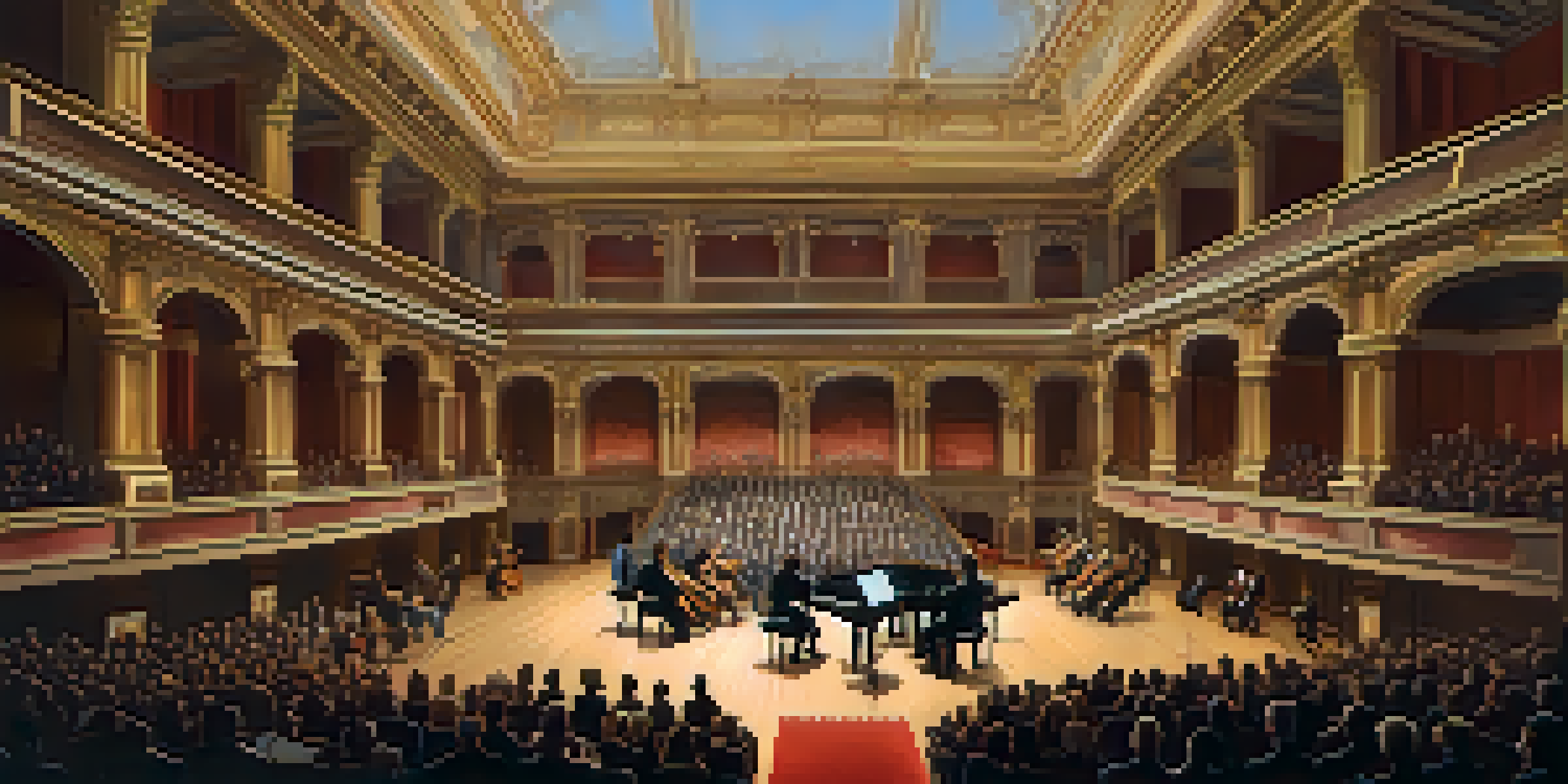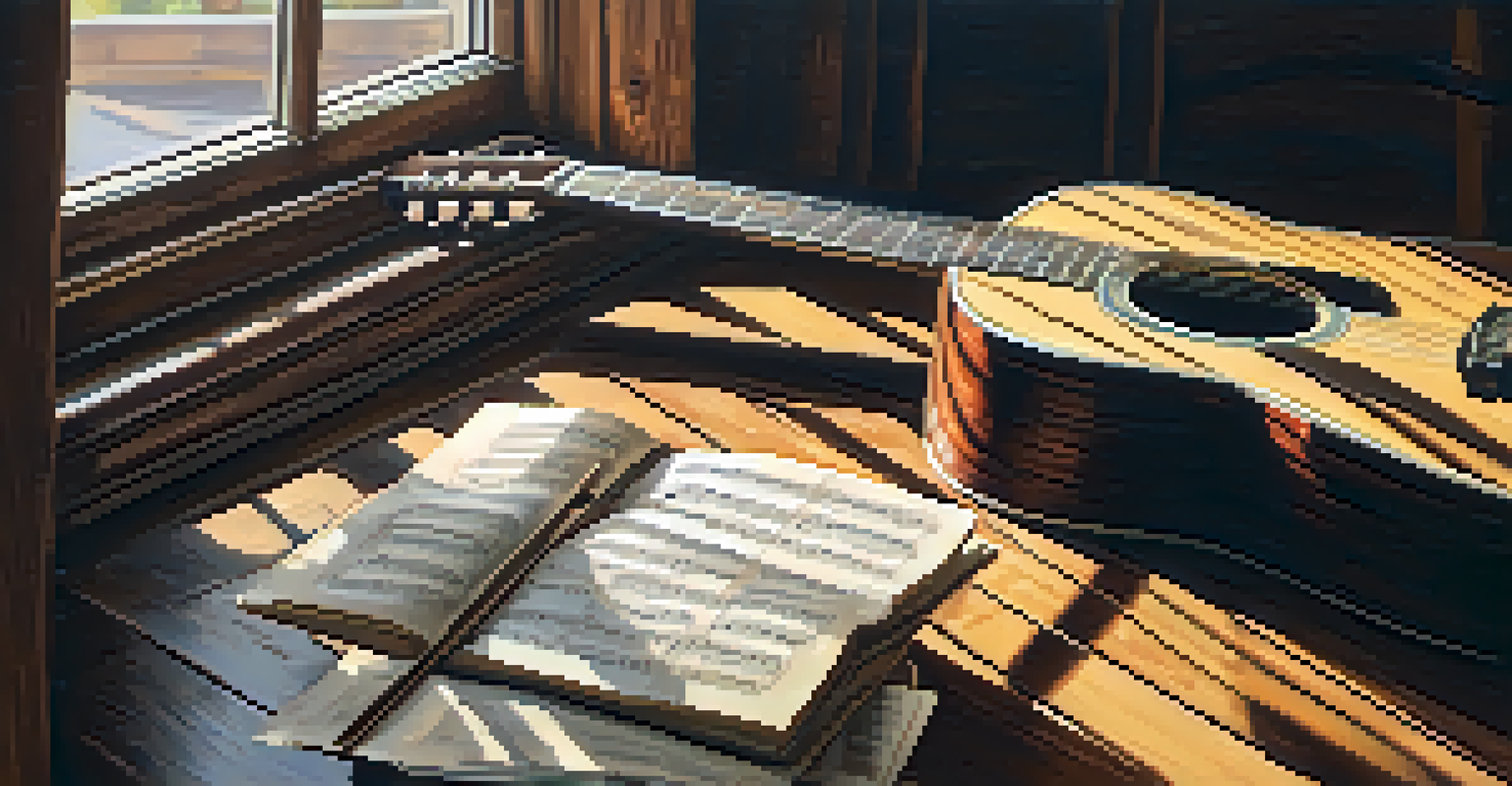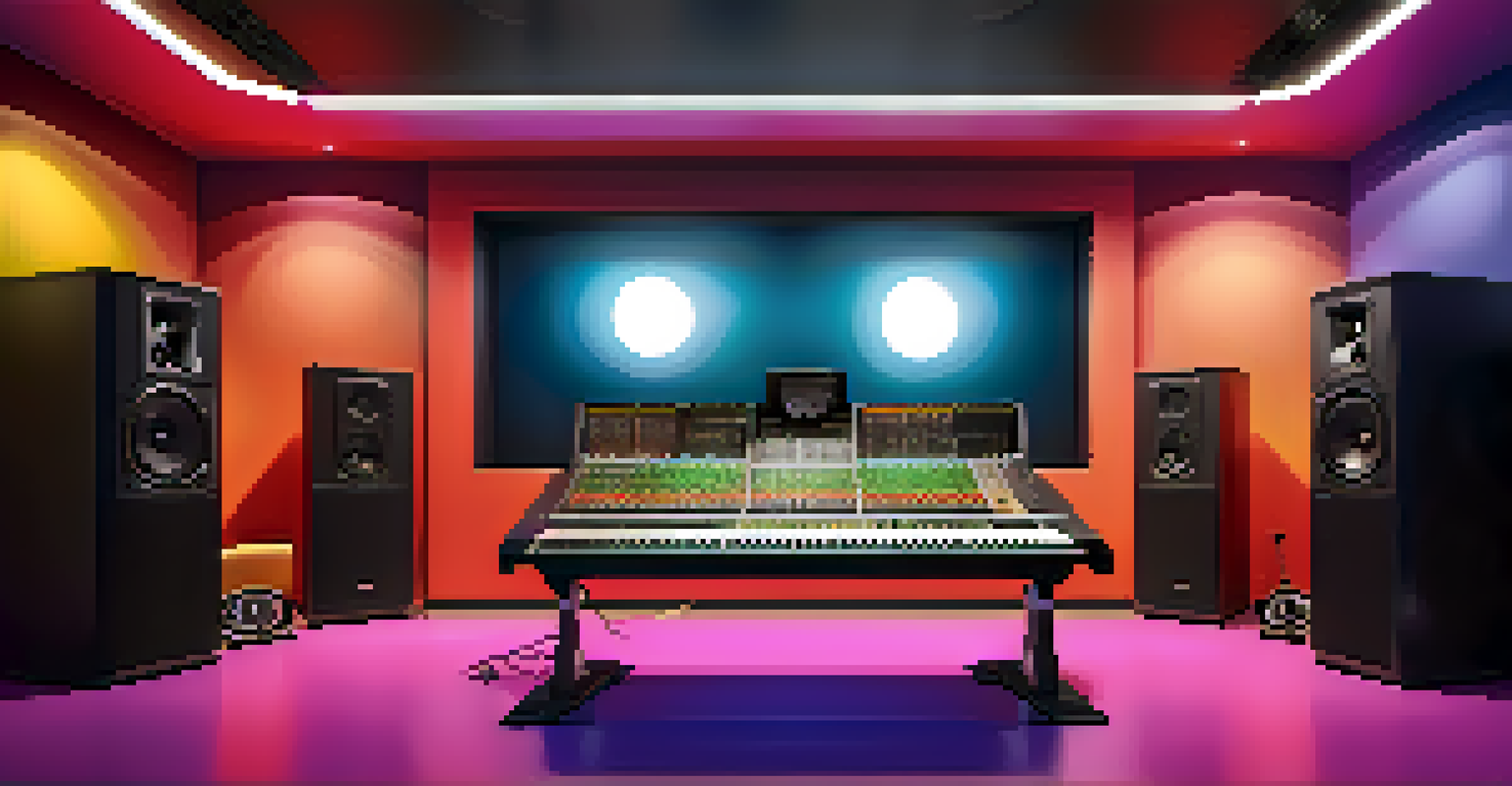The Science of Sound: Understanding Acoustics in Music

What is Acoustics and Why Does it Matter?
Acoustics is the branch of physics that studies sound, including its production, transmission, and effects. Understanding acoustics helps us appreciate how sound interacts with different environments, which is particularly important in music. For instance, a concert hall is designed with specific acoustic properties to enhance sound quality, allowing every note to be heard clearly.
Music is the shorthand of emotion.
When musicians perform, they rely on acoustics to convey their message. The way sound travels can change depending on the materials in the room, such as walls, floors, and even the audience. This is why some venues are renowned for their exceptional acoustics, making them a favorite for both artists and audiences alike.
In essence, acoustics is the backbone of music experiences. By studying how sound behaves, we can create environments that elevate the listening experience, whether in a small café or a grand auditorium.
The Physics of Sound Waves Explained
At its core, sound is a vibration that travels through air, water, or solid materials as waves. These sound waves can be described by their frequency (how high or low a sound is) and amplitude (how loud it is). For example, a deep bass note has a low frequency and high amplitude, making it feel powerful and resonant.

When musicians play an instrument, they create sound waves that interact with the environment around them. This interaction can enhance or dampen certain frequencies, which is why some instruments sound different in various settings. Imagine strumming a guitar in a small room versus a large hall; the acoustic properties will dramatically alter the sound.
Understanding Acoustics is Key
Acoustics is crucial for enhancing music experiences by shaping how sound interacts with various environments.
Understanding sound waves helps musicians and sound engineers design better performances. By manipulating these waves, they can achieve the desired sound quality and ensure that every note resonates beautifully with the audience.
Types of Acoustics: Live vs. Dead Spaces
Acoustic environments can be classified as 'live' or 'dead' spaces. Live spaces, like concert halls, reflect sound waves, creating a rich and vibrant audio experience. This reflection enhances the music's fullness, making it ideal for orchestras or bands to perform.
Sound is the vocabulary of nature.
On the other hand, dead spaces absorb sound waves, which can dampen the music's energy. These spaces, such as a padded rehearsal room, are often used for practicing to help musicians hear their mistakes more clearly. While they may not be ideal for performances, they serve a crucial purpose in the creative process.
Choosing the right space for a performance or rehearsal can significantly influence the outcome. Musicians often seek venues that strike a balance between live and dead acoustics, ensuring their sound is both clear and full-bodied.
The Role of Resonance in Music Acoustics
Resonance refers to the amplification of sound when its frequency matches the natural frequency of an object or space. This phenomenon is crucial in music, as it can enhance the richness of sound produced by instruments. For instance, a violin resonates beautifully because its body is designed to vibrate and amplify certain frequencies.
Understanding resonance allows musicians to select instruments that best fit their performance environment. In a large hall, a resonant instrument can fill the space with sound, while in smaller settings, the same instrument might overpower the audience. This adaptability is key to successful performances.
Resonance Amplifies Sound Quality
Resonance plays a vital role in music by amplifying sound when its frequency aligns with the natural frequency of instruments or spaces.
Moreover, resonance isn't just limited to instruments; it also affects the acoustics of the space itself. Architects often consider resonance when designing venues, ensuring that they enhance the music rather than hinder it.
The Impact of Technology on Sound and Acoustics
Modern technology has transformed how we understand and manipulate sound. From advanced microphones to digital sound processors, these tools allow musicians to shape their sound in ways previously unimaginable. For instance, electronic instruments can mimic the sounds of traditional ones, broadening the musical landscape.
Additionally, software like digital audio workstations (DAWs) enables artists to record, edit, and perfect their music with precision. This technology not only enhances the quality of sound but also allows for creative experimentation, pushing the boundaries of traditional music.
However, it's essential to balance technology and acoustics. While tech can enhance sound, over-reliance on it may lead to a loss of the natural qualities that make live music special. Musicians must find a harmonious blend to create authentic experiences.
The Importance of Acoustic Treatment in Spaces
Acoustic treatment involves modifying a space to improve its sound quality. This can include adding sound-absorbing materials, adjusting the shape of the room, or installing acoustic panels. Proper treatment helps control echoes and reverberations, ensuring that sound is clear and pleasant.
For musicians, having a well-treated environment can make a significant difference in rehearsal and performance quality. In untreated spaces, unwanted echoes can muddy the sound, making it challenging for musicians to stay in sync. Acoustic treatment helps create a focused sound, allowing artists to perform at their best.
Technology Shapes Modern Sound
Advancements in technology allow musicians to manipulate sound creatively, but balancing this with natural acoustics is essential for authentic experiences.
Moreover, acoustic treatment is not only for recording studios or concert halls; it can also enhance home listening experiences. By making simple adjustments, music lovers can enjoy their favorite tunes with improved clarity and depth.
The Future of Acoustics in Music and Beyond
As technology continues to evolve, so does our understanding of acoustics. Innovations in sound design and analysis are paving the way for new musical experiences. For instance, virtual reality (VR) is beginning to integrate acoustic principles, creating immersive environments where users can experience sound in a whole new way.
Moreover, research is ongoing into how sound affects our emotions and well-being. This exploration could lead to new therapeutic uses for music and sound, enhancing our understanding of the profound impact acoustics can have on our lives.

In conclusion, the science of sound and acoustics will keep shaping the music industry and beyond. As we explore new frontiers, the fusion of art and science will continue to create extraordinary experiences for audiences worldwide.